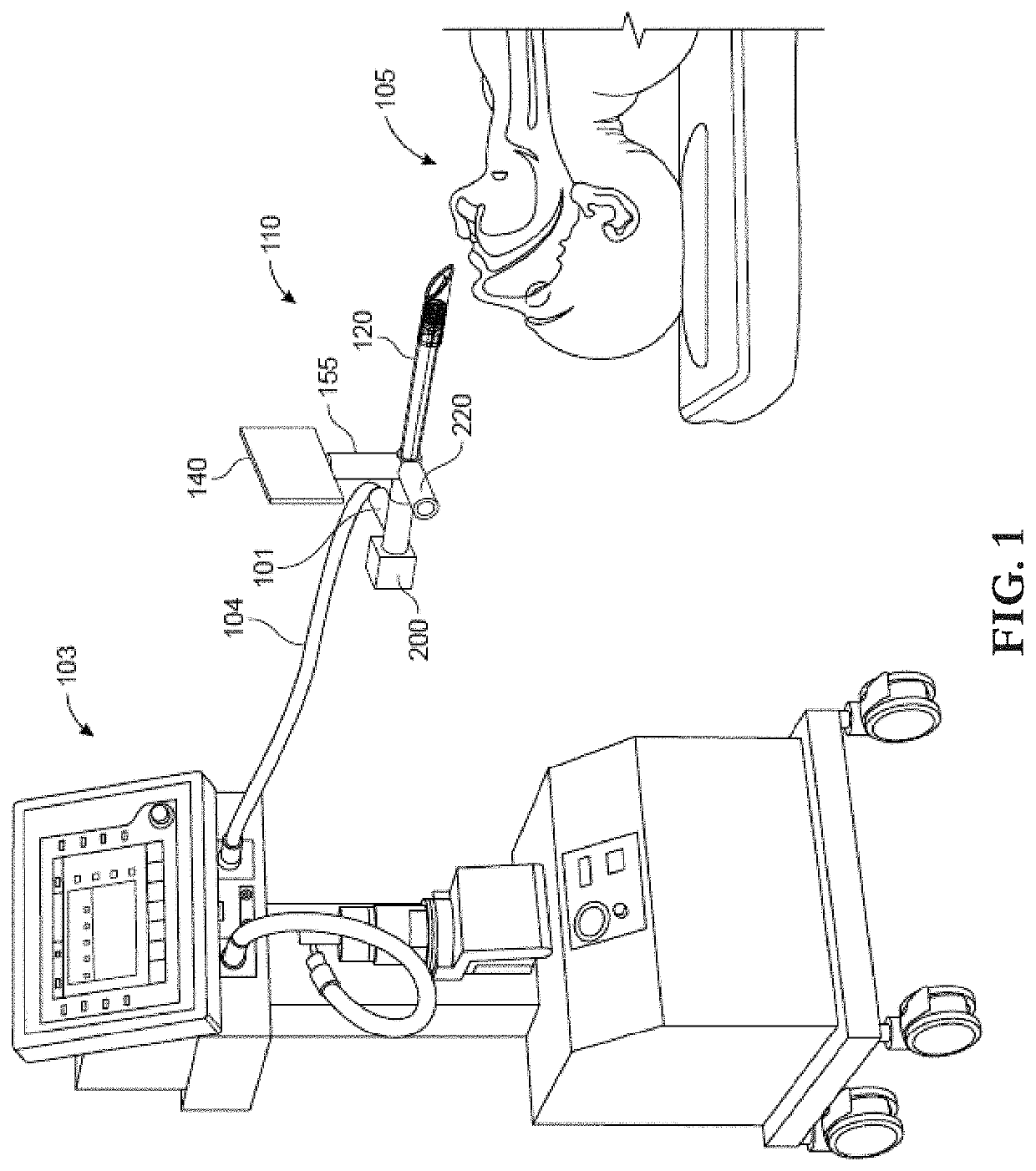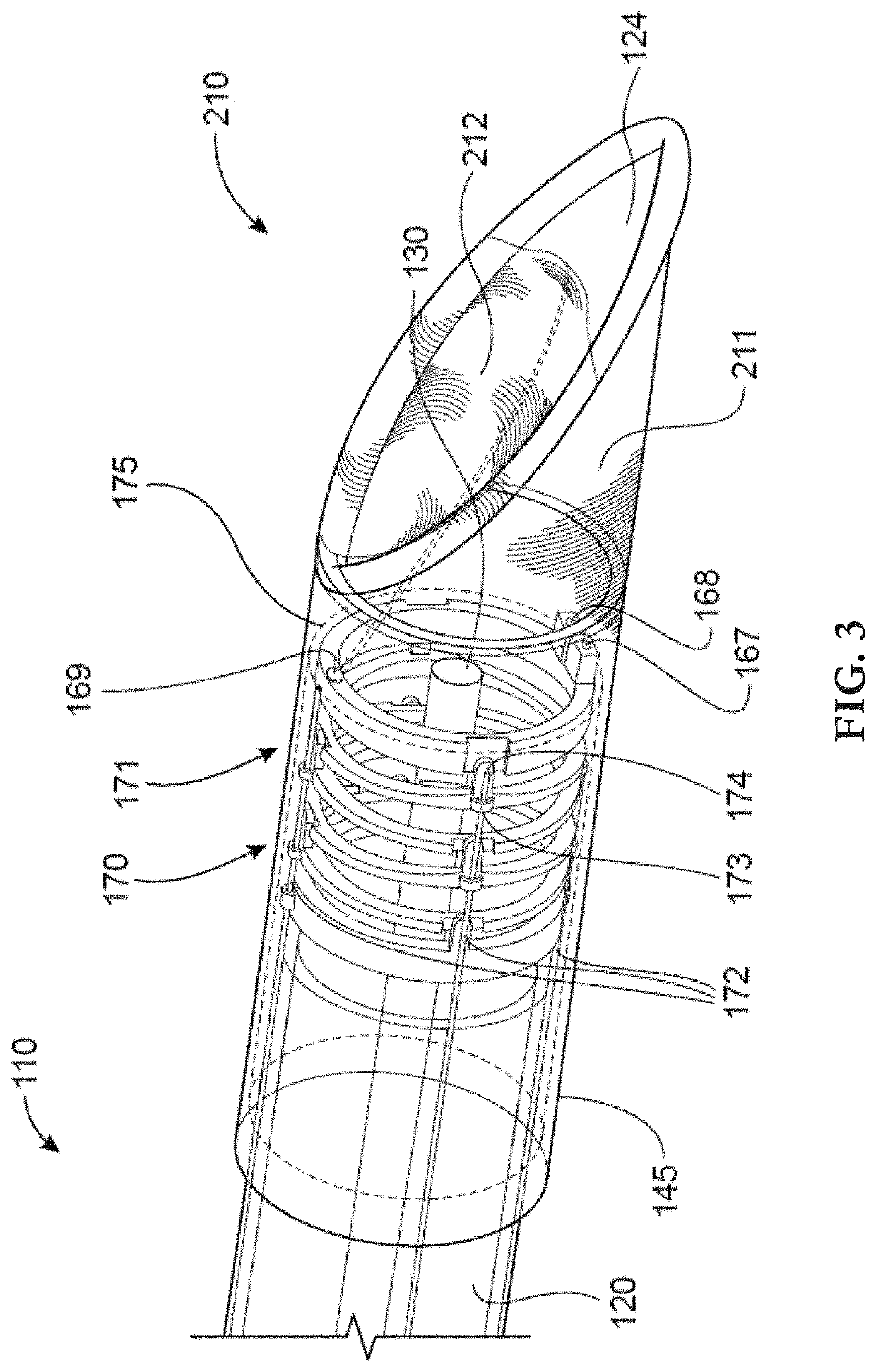While the majority of cases of intubations are straightforward and simple, difficulty in airways do occur and can result in catastrophic outcomes such as death,
brain damage, cardiopulmonary arrest,
tracheotomy, and trauma to the
pharynx,
larynx, and trachea.
The performance of the second step can be demanding and requires skill and experience.
Whilst
laryngoscopes are adequate in certain cases, they frequently, however, fail simply because they only
expose the airway to the level of the
epiglottis and not beyond.
Likewise, its utility is restricted in the presence of factors such as a large tongue, large tumors in the
oral cavity or oropharynx, an edematous tongue, a receded
chin, an immobile jaw, elongated upper incisors, a stiff and immobile neck, and facial and neck trauma.
Notwithstanding these advantages, challenges still remain due to the blade of the
video laryngoscope being ordinarily positioned at the vallecula (the point between the base of the tongue and the epiglottis).
In situations where blockage is present beyond the laryngeal blade (i.e. between the
tongue base and the vocal cords), video
laryngoscopes are inadequate and cannot better the
visualization of the laryngeal opening.
An important issue with
intubation that cannot be ignored is the need to quickly intubate the patient.
In the cases of difficult airways, it is not uncommon for the operator to take a significant amount of time to intubate.
Because the
oxygen is held during the
intubation process, the patient may suffer from hypoxia.
Another vital aspect of
intubation is the existence of technical limitations that force the operator to stop
oxygenation during intubation.
The most important factors include: presence of a stylet inside the full length of the ETT, inability to control
oxygen escaping out of the mouth, and ineffectual means of preventing the air diverted into the
stomach.
A repeated stop and go cycle can be frustrating and can reduce the likelihood of successful intubation, not to mention the potential adverse
impact on the patient.
Although they have been enormously successful for many decades, endotracheal tubes suffer from several major disadvantages.
In many instances, the difficulty of inserting endotracheal tubes has tragically resulted in the deaths or permanent brain injuries of patients.
There are additional disadvantages associated with endotracheal tubes as well.
While some of these problems are minor or temporary, others can be permanent or life-threatening.
Another
disadvantage with endotracheal tubes is that the insertion of an endotracheal tube requires manipulations of the patient's
head and neck.
These necessary manipulations, however, may be difficult or contraindicated in some patients, thus rendering successful intubation difficult or even impossible.
If an SGA cannot be inserted with facility, the results can be dire.
It is noted that the feature that makes it difficult for an SGA to be inserted easily, besides its bulkiness, is its configuration.
Naturally, then, the
mask will end up in the larynx, being that it is located anterior to the hypopharyngeal wall, which is undesirable.
Instead, it is necessary to force the SGA mask to advance it inferiorly only.
An additional
weakness of the prior art is that the proximal aspect of the mask /
cuff is designed to make contact with the superior tip of the epiglottis, which is a specific portion of the epiglottis that is free-floating and does not rest against any firm structures.
As such, the mask /
cuff resting against the top of the epiglottis is an ineffective means to obtain an effective seal.
Moreover, all SGAs that produce a seal in this manner run the risk of applying pressure over the tip of the
hyoid bone, which is in very close proximity to the
hypoglossal nerve, making the nerve vulnerable to injury.
The crux of the problem, therefore, is a lack of anatomical understanding.
However, the disclosure failed to teach an effective means.
Therefore, there is still a gap in the art that needs to be filled concerning more precise and effective localized sealing.
Prior art, furthermore, fails to address the issue of directing
airflow preferentially toward the trachea.
These devices would, therefore, allow only a small fraction of the air to be directed toward the trachea, highlighting another
disadvantage of the state of the art of SGAs.
Also, a patient's clinical status may suddenly deteriorate on an SGA, so inserting an endotracheal tube becomes essential.
While the effort is laudable, blindly inserting a
breathing tube is not only inadvisable but it can cause life-threatening complications for a patient.
During the course of caring for an intubated patient, there may come a time (due to tube obstruction, improper size, malfunctioning tube, etc.) where it is necessary to remove the existing
breathing tube and insert an entirely new endotracheal tube in the patient.
The problem is that when the old tube is removed, the physician loses, (possibly up to a few minutes) control of the airway of the patient.
If the patient is not reintubated successfully in a short amount of time, the patient's life starts to become in danger.
At present, there is no
consensus among airway experts what the best clinical predictors of successful extubation are.
At the same time, the same experts agree that the ability to visualize the larynx and assess its function can be invaluable to reduce the rate of “failed extubation.” A fiberoptic evaluation tool, a potential tool available today, however, is severely limited, if not useless, due to the ETT blocking the core structures of the larynx.
 Login to View More
Login to View More  Login to View More
Login to View More 


